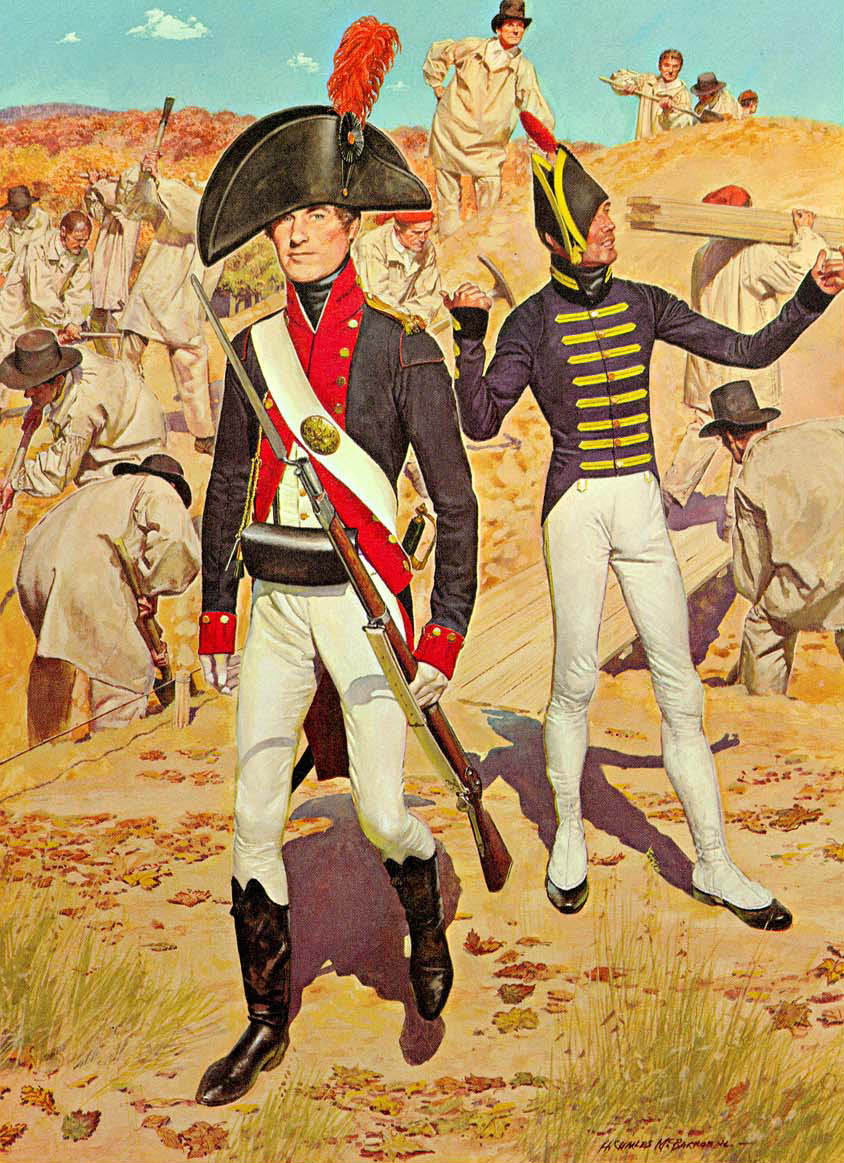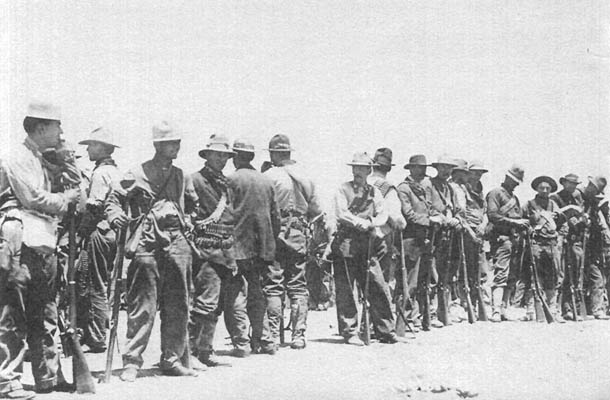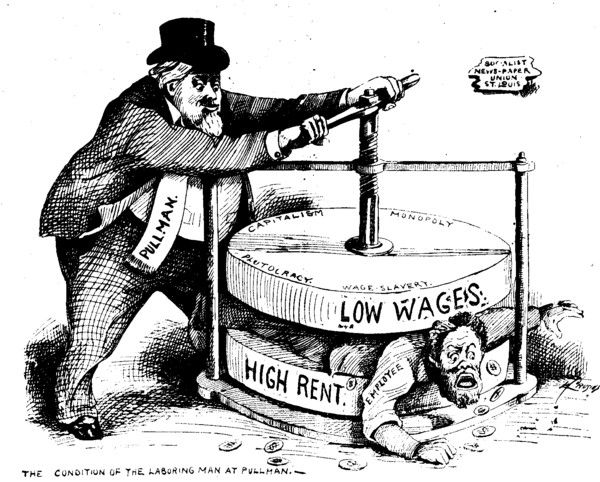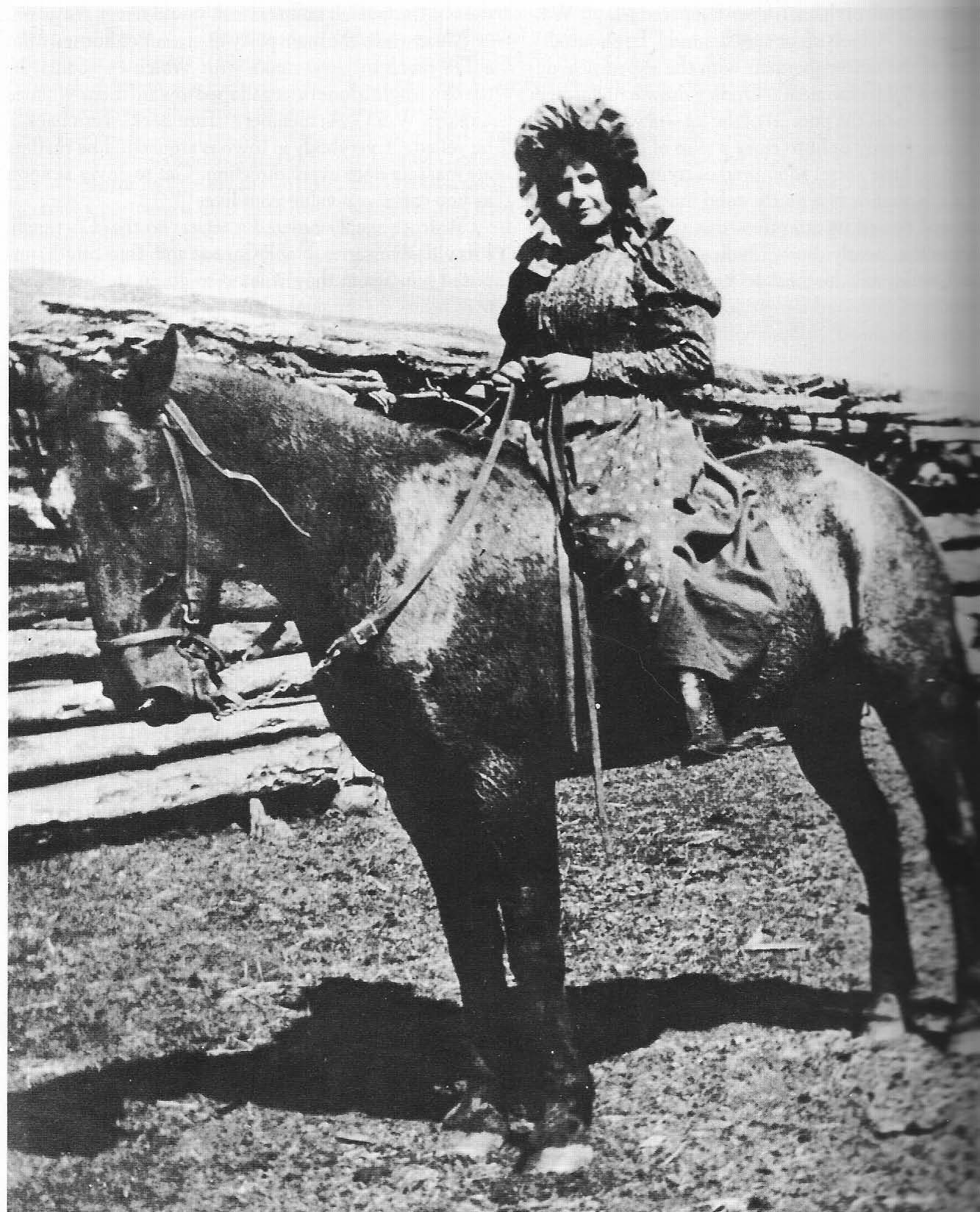|
Guy H. Preston
Guy H. Preston (May 29, 1864 – December 12, 1952) was a career officer in the United States Army. A veteran of the American Indian Wars, Spanish–American War, Philippine–American War, and World War I, he served from 1888 to 1928 and attained the rank of brigadier general. His command assignments included the 4th Field Artillery Brigade, 160th Field Artillery Brigade, 7th Division, 1st Cavalry Regiment, 23rd Infantry Regiment, Eighth Corps Area General Depot, and the San Francisco General Intermediate Depot. Preston's awards included the Citation Star for heroism in the Ghost Dance War against the Lakota people in 1891. When the Citation Star was authorized for conversion to the Silver Star in 1932, Preston's award was converted to the new medal. A native of Medford, Massachusetts, Preston was raised and educated in Medford, Lanesboro, and Cheshire, and he attended Worcester Academy in Massachusetts and New Hampshire's Phillips Exeter Academy. He graduated from the United ... [...More Info...] [...Related Items...] OR: [Wikipedia] [Google] [Baidu] |
Medford, Massachusetts
Medford is a city in Middlesex County, Massachusetts, United States. At the time of the 2020 United States census, Medford's population was 59,659. It is home to Tufts University, which has its campus on both sides of the Medford and Somerville border. History Indigenous history Native Americans inhabited the area that would become Medford for thousands of years prior to European colonization of the Americas. At the time of European contact and exploration, Medford was the winter home of the Naumkeag people, who farmed corn and created fishing weirs at multiple sites along the Mystic River. Naumkeag sachem Nanepashemet was killed and buried at his fortification in present-day Medford during a war with the Tarrantines in 1619. The contact period introduced several European infectious diseases which would decimate native populations in virgin soil epidemics, including a smallpox epidemic which in 1633 killed Nanepashemet's sons, sachems Montowompate and Wonohaquaham. ... [...More Info...] [...Related Items...] OR: [Wikipedia] [Google] [Baidu] |
Ghost Dance War
The Ghost Dance War was the military reaction of the United States government against the spread of the Ghost Dance movement on Lakota Sioux reservations in 1890 and 1891. The United States Army designation for this conflict was Pine Ridge Campaign. White settlers called it the Messiah War. Lakota Sioux reservations were occupied by the US Army, causing fear, confusion, and resistance among the Lakota. It resulted in the Wounded Knee Massacre wherein the 7th Cavalry killed over 250 Lakota, primarily unarmed women, children, and elders, at Wounded Knee on December 29, 1890. The end of the Ghost Dance War is usually dated January 15, 1891, when Lakota Ghost-Dancing leader Kicking Bear decided to meet with US officials. However, the US government continued to use the threat of violence to suppress the Ghost Dance at the Pine Ridge, Rosebud, Cheyenne River, and Standing Rock reservations. Ghost Dance The Ghost Dance ceremony began as part of a Native American religious m ... [...More Info...] [...Related Items...] OR: [Wikipedia] [Google] [Baidu] |
United States Military Academy
The United States Military Academy (USMA), commonly known as West Point, is a United States service academies, United States service academy in West Point, New York that educates cadets for service as Officer_(armed_forces)#United_States, commissioned officers in the United States Army. The academy was founded in 1802, and it is the oldest of the five United States service academies, American service academies. The Army has occupied the site since establishing a fort there in 1780 during the American Revolutionary War, as it sits on strategic high ground overlooking the Hudson River north of New York City. West Point's academic program grants the Bachelor of Science degree with a curriculum that grades cadets' performance upon a broad academic program, military leadership performance, and mandatory participation in competitive athletics. Candidates for admission must apply directly to the academy and receive a nomination, usually from a member of United States Congress, Congr ... [...More Info...] [...Related Items...] OR: [Wikipedia] [Google] [Baidu] |
Silver Star
The Silver Star Medal (SSM) is the United States Armed Forces' third-highest military decoration for valor in combat. The Silver Star Medal is awarded primarily to members of the United States Armed Forces for gallantry in action against an enemy of the United States. History The Silver Star Medal (SSM) is the successor award to the Citation Star which was established by an Act of Congress on 9 July 1918, during World War I. On 19 July 1932, the Secretary of War approved the conversion of the Citation Star to the SSM with the original Citation Star incorporated into the center of the medal. Authorization for the Silver Star Medal was placed into law by an Act of Congress for the U.S. Navy on 7 August 1942, and an Act of Congress for the U.S. Army on 15 December 1942. The current statutory authorization for the medal is Title 10 of the United States Code, for the U.S. Army, for the U.S. Navy and U.S. Marine Corps, and for the U.S. Air Force and U.S. Space Force. Th ... [...More Info...] [...Related Items...] OR: [Wikipedia] [Google] [Baidu] |
Occupation Of The Rhineland
The Occupation of the Rhineland placed the region of Germany west of the Rhine river and four bridgeheads to its east under the control of the victorious Allies of World War I from 1December 1918 until 30June 1930. The occupation was imposed and regulated by articles in the Armistice of 11 November 1918, the Treaty of Versailles and the parallel agreement on the Rhineland occupation signed at the same time as the Versailles Treaty. The Rhineland was demilitarised, as was an area stretching fifty kilometres east of the Rhine, and put under the control of the Inter-Allied Rhineland High Commission, which was led by a French commissioner and had one member each from Belgium, Great Britain and the United States (the latter in an observer role only). The purpose of the occupation was to give France and Belgium security against any future German attack and serve as a guarantee for Germany's World War I reparations, reparations obligations. After Germany fell behind on its payments in ... [...More Info...] [...Related Items...] OR: [Wikipedia] [Google] [Baidu] |
World War I
World War I or the First World War (28 July 1914 – 11 November 1918), also known as the Great War, was a World war, global conflict between two coalitions: the Allies of World War I, Allies (or Entente) and the Central Powers. Fighting took place mainly in European theatre of World War I, Europe and the Middle Eastern theatre of World War I, Middle East, as well as in parts of African theatre of World War I, Africa and the Asian and Pacific theatre of World War I, Asia-Pacific, and in Europe was characterised by trench warfare; the widespread use of Artillery of World War I, artillery, machine guns, and Chemical weapons in World War I, chemical weapons (gas); and the introductions of Tanks in World War I, tanks and Aviation in World War I, aircraft. World War I was one of the List of wars by death toll, deadliest conflicts in history, resulting in an estimated World War I casualties, 10 million military dead and more than 20 million wounded, plus some 10 million civilian de ... [...More Info...] [...Related Items...] OR: [Wikipedia] [Google] [Baidu] |
Mexican Border War
The Mexican Border War, also known as the Border Campaign, refers to a series of military engagements which took place between the United States military and several Mexican factions in the Mexican–American border region of North America during the Mexican Revolution. From the beginning of the Mexican Revolution in 1910, the United States Army was stationed in force along the border and, on several occasions, fought with Mexican rebels or regular Federales, federal troops. The height of the conflict came in 1916 when revolutionary Pancho Villa Battle of Columbus (1916), attacked the American border town of Columbus, New Mexico. In response, the United States Army, under the direction of General John J. Pershing, launched Pancho Villa Expedition, a punitive expedition into northern Mexico, to find and capture Villa. Although Villa was not captured, the US Army found and engaged the Villistas, Villista rebels, killing Villa's two top lieutenants. The revolutionary himself escape ... [...More Info...] [...Related Items...] OR: [Wikipedia] [Google] [Baidu] |
Philippine–American War
The Philippine–American War, known alternatively as the Philippine Insurrection, Filipino–American War, or Tagalog Insurgency, emerged following the conclusion of the Spanish–American War in December 1898 when the United States annexed the Philippine Islands under the Treaty of Paris (1898), Treaty of Paris. Philippine nationalists constituted the First Philippine Republic in January 1899, seven months after signing the Philippine Declaration of Independence. The United States did not recognize either event as legitimate, and tensions escalated until fighting commenced on February 4, 1899, in the Battle of Manila (1899), Battle of Manila. Shortly after being denied a request for an armistice, the Philippine Council of Government issued a proclamation on June 2, 1899, urging the people to continue the war. Philippine forces initially attempted to engage U.S. forces conventionally but transitioned to guerrilla tactics by November 1899. Philippine President Emilio Aguinaldo w ... [...More Info...] [...Related Items...] OR: [Wikipedia] [Google] [Baidu] |
Spanish–American War
The Spanish–American War (April 21 – August 13, 1898) was fought between Restoration (Spain), Spain and the United States in 1898. It began with the sinking of the USS Maine (1889), USS ''Maine'' in Havana Harbor in Cuba, and resulted in the U.S. acquiring sovereignty over Puerto Rico, Guam, and the Philippines, and establishing a protectorate over Cuba. It represented U.S. intervention in the Cuban War of Independence and Philippine Revolution, with the latter later leading to the Philippine–American War. The Spanish–American War brought an end to almost four centuries of Spanish presence in the Americas, Asia, and the Pacific; the United States meanwhile not only became a major world power, but also gained several island possessions spanning the globe, which provoked rancorous debate over the wisdom of expansionism. The 19th century represented a clear decline for the Spanish Empire, while the United States went from a newly founded country to a rising power. In 1895, C ... [...More Info...] [...Related Items...] OR: [Wikipedia] [Google] [Baidu] |
Pullman Strike
The Pullman Strike comprised two interrelated strikes in 1894 that shaped national labor policy in the United States during a period of deep economic depression. First came a strike by the American Railway Union (ARU) against the Pullman Company's factory in Chicago in spring 1894. When it failed, the ARU launched a national boycott against all trains that carried Pullman passenger cars. The nationwide railroad boycott that lasted from May 11 to July 20, 1894, was a turning point for US labor law. It pitted the American Railway Union (ARU) against the Pullman Company, the main railroads, the main labor unions, and the federal government of the United States under President Grover Cleveland. The strike and boycott shut down much of the nation's freight and passenger traffic west of Detroit, Michigan. The conflict began in Chicago, on May 11 when nearly 4,000 factory employees of the Pullman Company began a wildcat strike in response to recent reductions in wages. Most of the factory ... [...More Info...] [...Related Items...] OR: [Wikipedia] [Google] [Baidu] |
Johnson County War
The Johnson County War, also known as the War on Powder River and the Wyoming Range War, was a range war in Johnson County, Wyoming from 1889 to 1893. The conflict began when cattle companies started ruthlessly persecuting alleged Cattle raiding, rustlers in the area, many of whom were settlers who competed with them for livestock, land and water rights. As violence swelled between the large established ranchers and the smaller settlers in the state, it culminated in the Powder River Country, when the ranchers hired Gunfighter, gunmen, who invaded the county. The gunmen's initial incursion in the territory alerted the small farmers and ranchers, as well as the Posse comitatus (common law), state lawmen, and they formed a posse of 200 men that led to a grueling standoff which ended when the United States Cavalry on the orders of President of the United States, President Benjamin Harrison relieved the two forces, although further fighting persisted.Tuccille, Jerome. ''The Roughest R ... [...More Info...] [...Related Items...] OR: [Wikipedia] [Google] [Baidu] |









